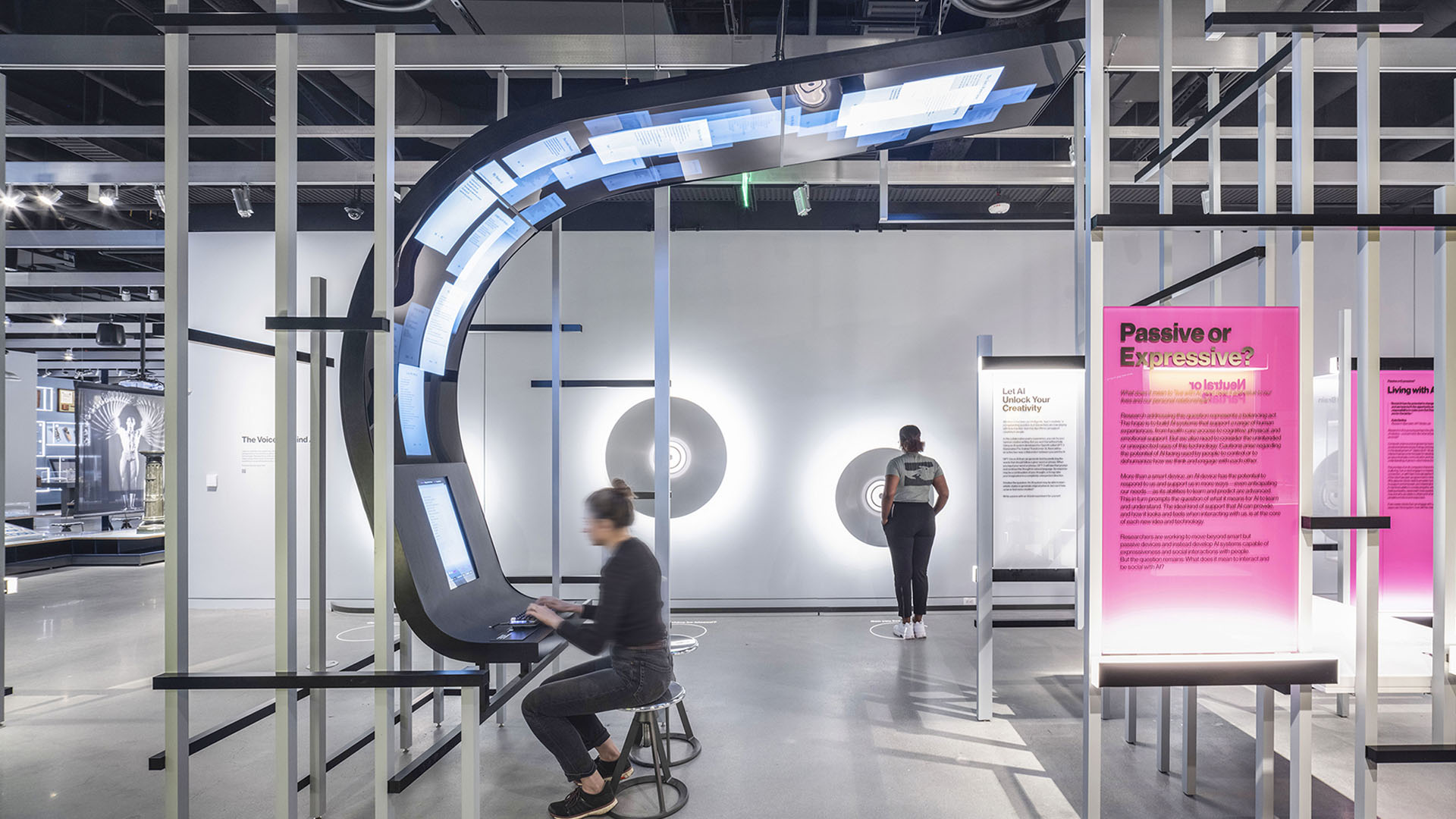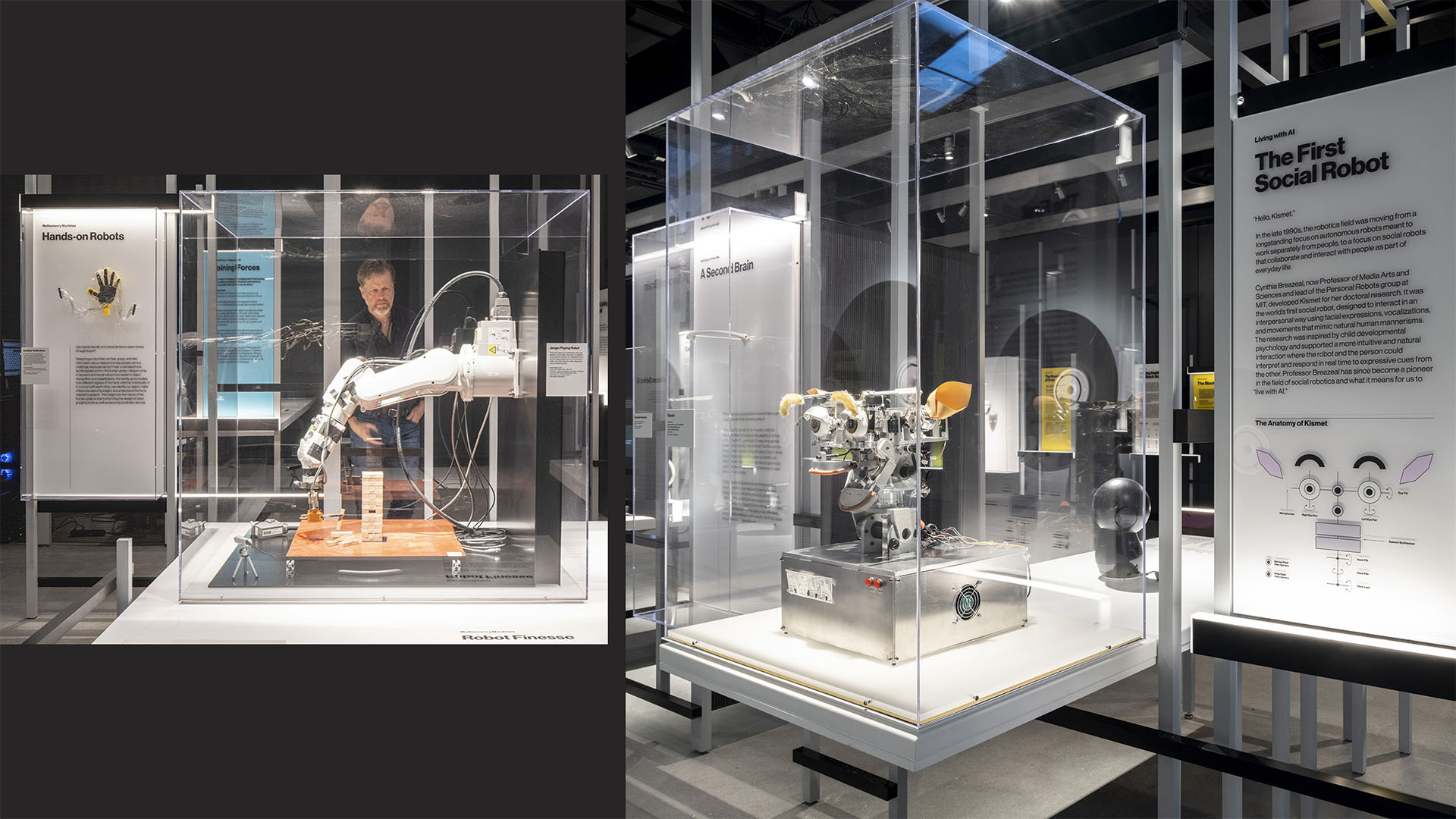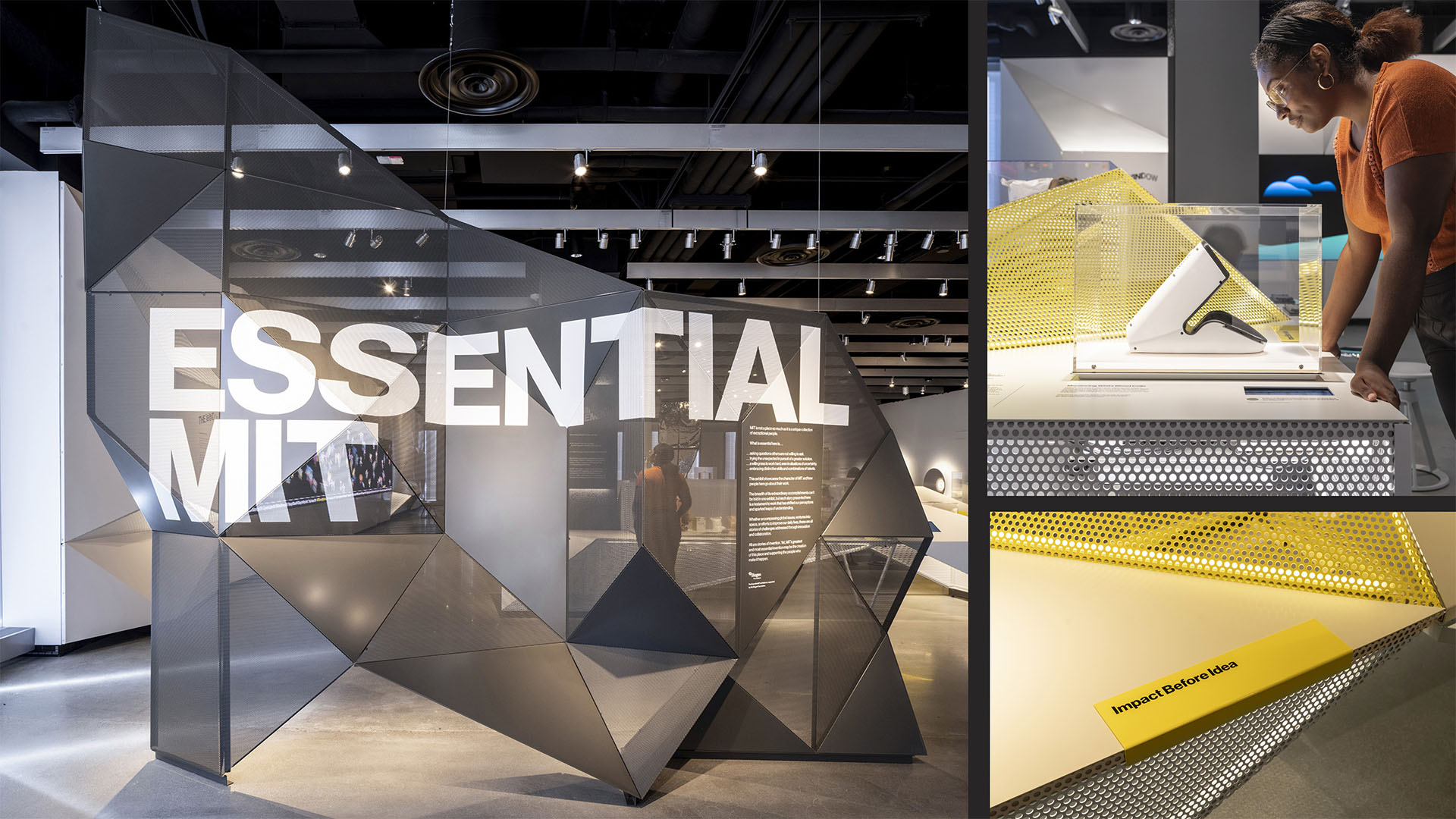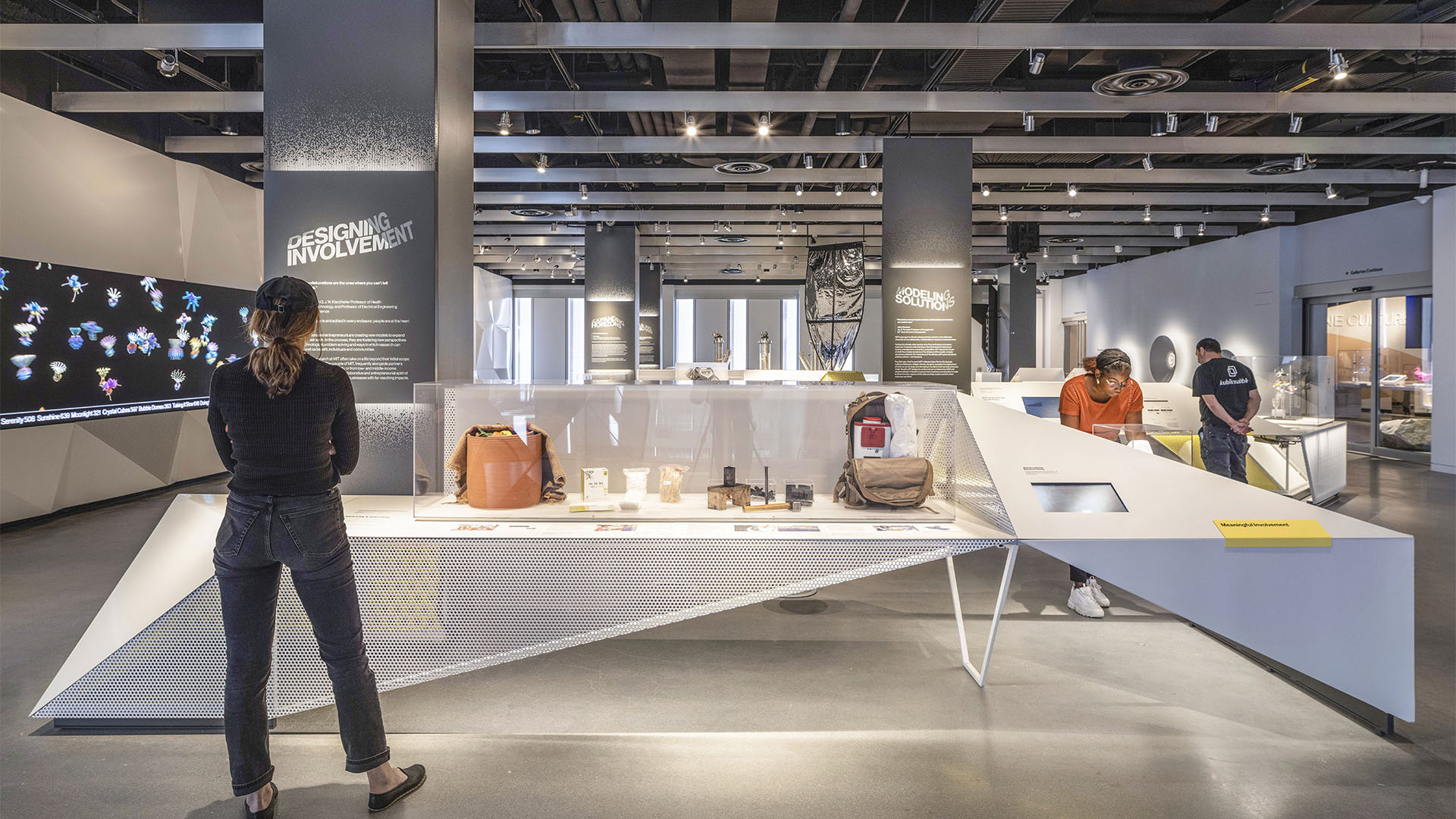MIT Museum Exhibitions
This university museum and its exhibition go a step further and are unique in terms of voice, physical armature, and opportunities for interactivity. The design helps people of all ages and abilities to realize how science, along with human creativity and ingenuity, improves our lives and provides our best hopes for the future – and MIT invites everyone to feel and, importantly, be a part of that.
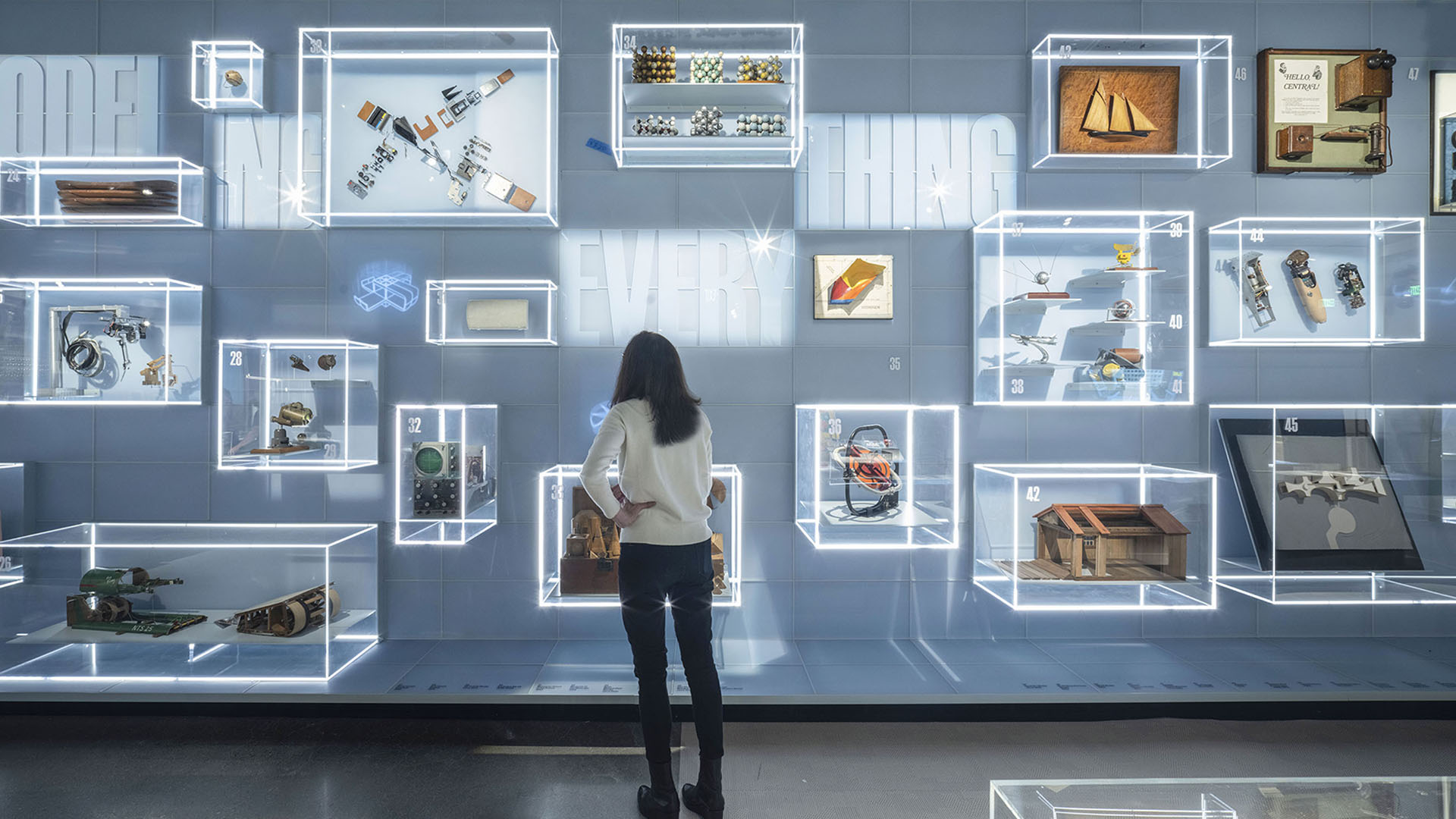
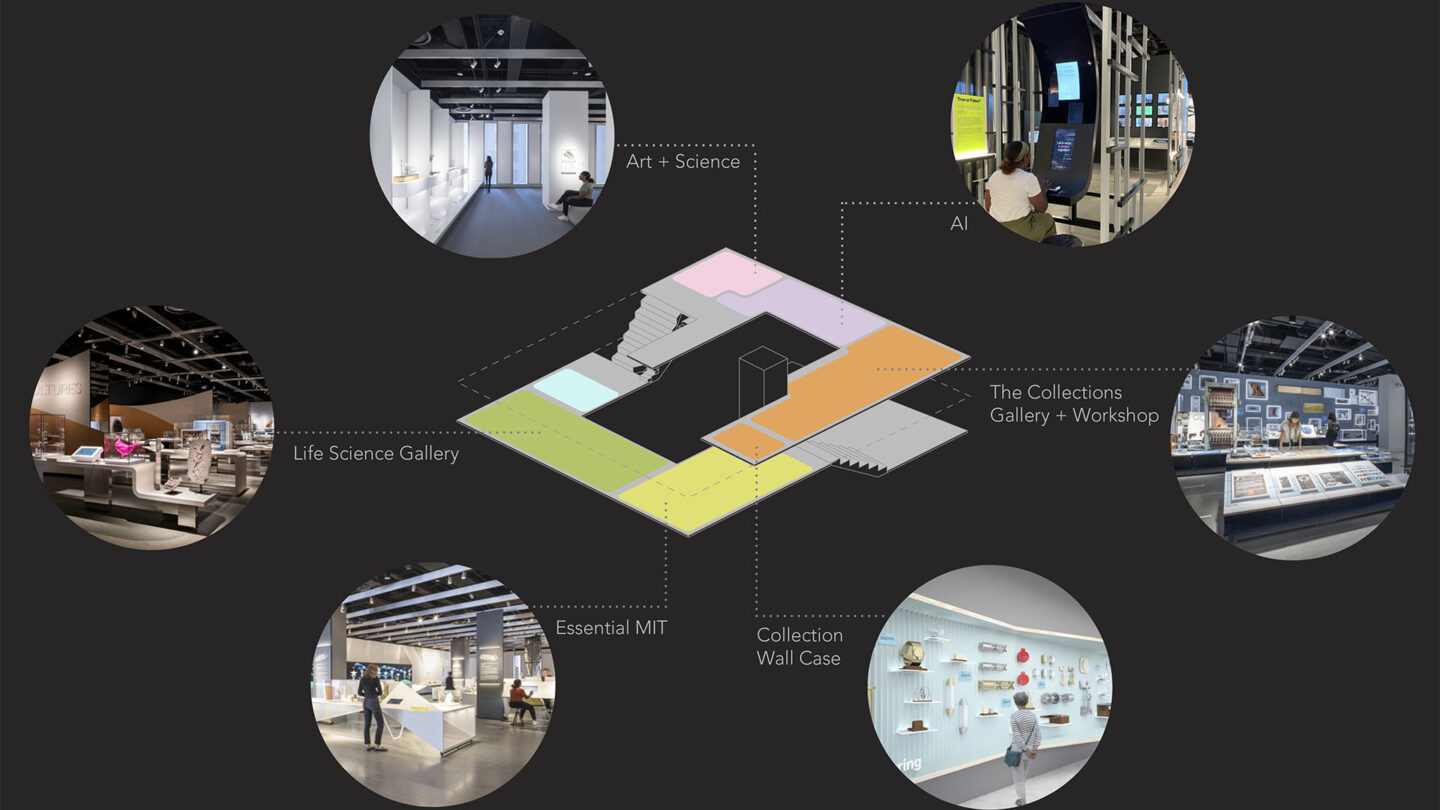
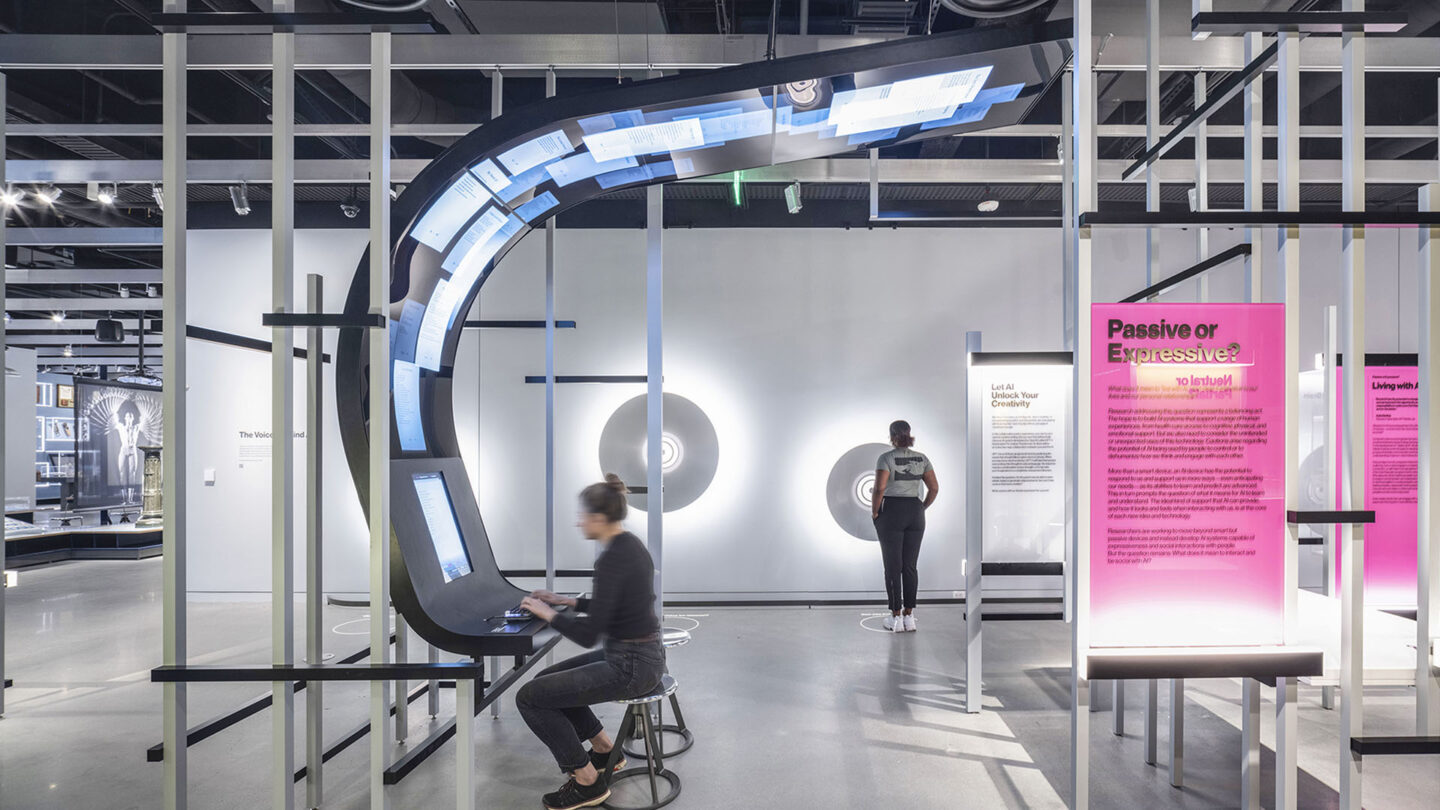
Essential MIT Gallery
Project Overview
Housed for over two decades in a converted warehouse, MIT Museum’s collections and community engagement had outgrown their facilities. The construction of a new campus gateway in Kendall Square provided the opportunity to create a new multifaceted cultural institution with significantly more public space. Still, the driving force behind this new installation is not scale but a refocused mission towards accessibility, social equity, and environmental awareness. As the value of science and evidence-based reasoning has been called into question by some segments of society (i.e., anti-vaccine, disbelief in global warming), our project is central to that discourse. Science and technology can be intimidating, and science museums typically focus on early childhood and STEAM to bridge that gap. This university museum and its exhibition go a step further and are unique in terms of voice, physical armature, and opportunities for interactivity. The design helps people of all ages and abilities to realize how science, along with human creativity and ingenuity, improves our lives and provides our best hopes for the future – and MIT invites everyone to feel and, importantly, be a part of that.
Each gallery has its own display concept, materiality, and spatial layout related to the curatorial premise yet presents as one distinctive Museum. What links the different spaces is strong visual coherence backed by highly resolved detailing and a consistently bold graphic overlay. Technology is thoroughly integrated, experiential, and experimental yet remains approachable, robust, and playful in the spirit of MIT.
Integrated sustainable design.
The exhibition design is flexible, can be re-purposed, and preserves archival materials in an environment that respects human and planetary health. This includes material choices, close temperature, and humidity monitoring, highly efficient media equipment, minimizing heat gain, attention to not over-lighting, and lighting system controls. These systems and design nuances amplify thecuratorial narrative. The impact is personal and visceral.
Collections Gallery (image 1)
MIT is not a place; it is a unique collection of exceptional people sharing their knowledge. The gallery features a monumental display of hundreds of models of the process of discovery and innovation along a 90-foot-long wall. The casework is rear-illuminated, and the wall itself is made of translucent material. Animated diagrams illustrate how these objects work. The gallery layout features a series of specific themes, each displayed on platforms with an articulated structure that invites exploration and allows for easy rotation overtime.
Essential MIT Gallery (image 3/4)
Whether encompassing global issues, ventures into space, or efforts to improve our daily lives, stories told in this exhibit showcase the process of discovery and the individuals who sit at the heart of MIT’s culture. Explore a wide array of paradigm-shifting innovations in ideas and technology, with models and artifacts that talk to discovery, from the galaxies to nanotechnology. The tessellated rhythm of the exhibit structures sets the tone for the sophisticated yet welcoming museum experience.
AI Gallery (images 5/6)
The irony of artificial intelligence is that it inspires new perspectives on human intelligence. The Gallery talks about the role of AI in augmenting, supporting, and collaborating with people. The display armature alludes to the internal structure of computation and networks. When you arrive, the field of vertical steel posts seems almost impenetrable. Yet, once you enter the gallery, the simplicity of the plan with its clear circulation paths brings you through a straightforward story of human and AI interactivity. Visitors can train a robot or see a visualization of a neural net in real time. An armature of curving OLED screens creates a place where visitors can write a poem collaboratively with cutting-edge AI (GPT3).
Life Sciences Gallery (images 7/8)
Focusing on “Gene Culture,” this gallery explores technological advances in the field of genetic discovery and the ethical and moral questions that arise from the manipulation of life. The gallery incorporates both dramatic breakthroughs in technologies and artworks—witty, provocative, absurd, and profound—that prompt us to consider our future – now. The work of 18 artists mixed into the field of scientific explorations provides a creative journey allowing all visitors to imagine and learn about the possibilities for this new world.
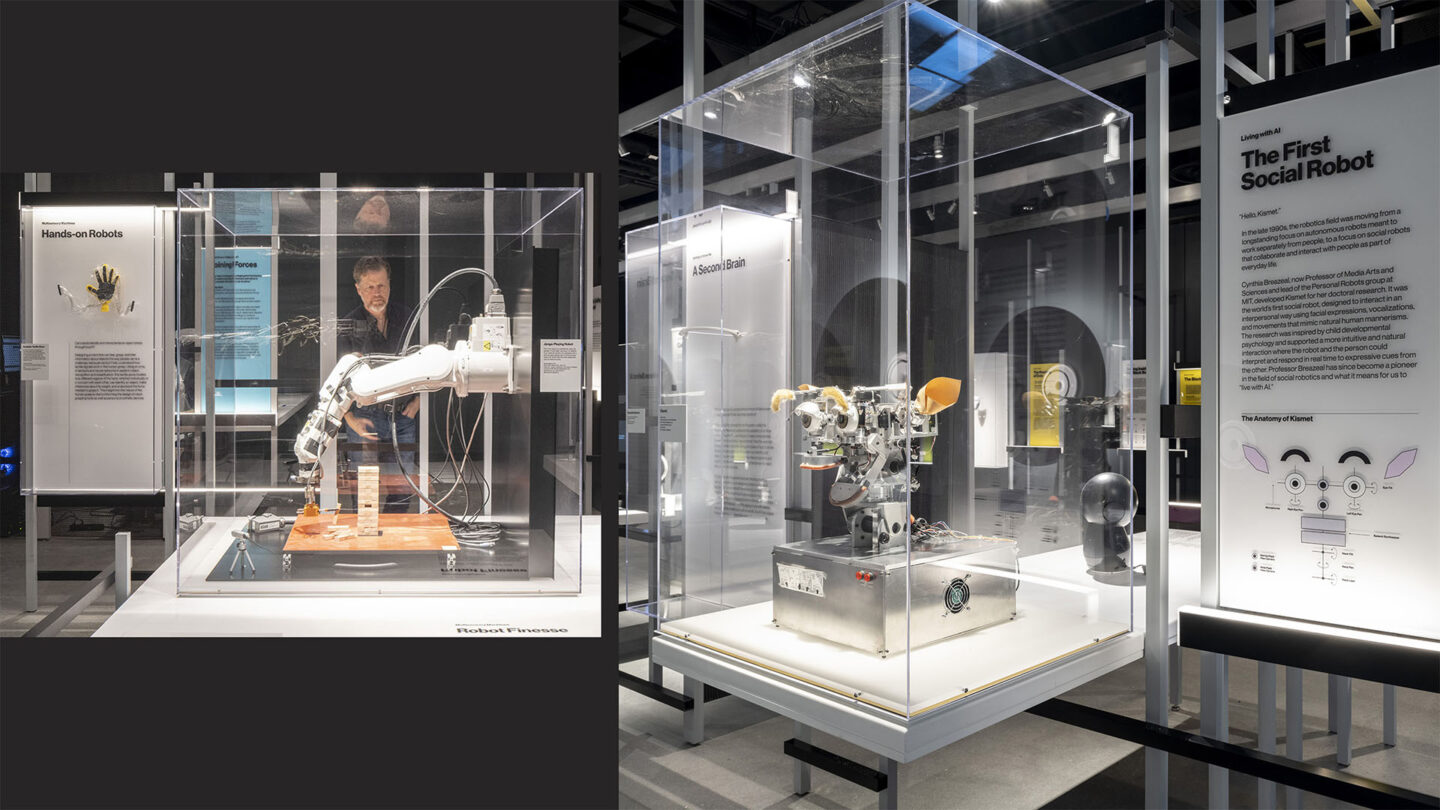
Essential MIT Gallery
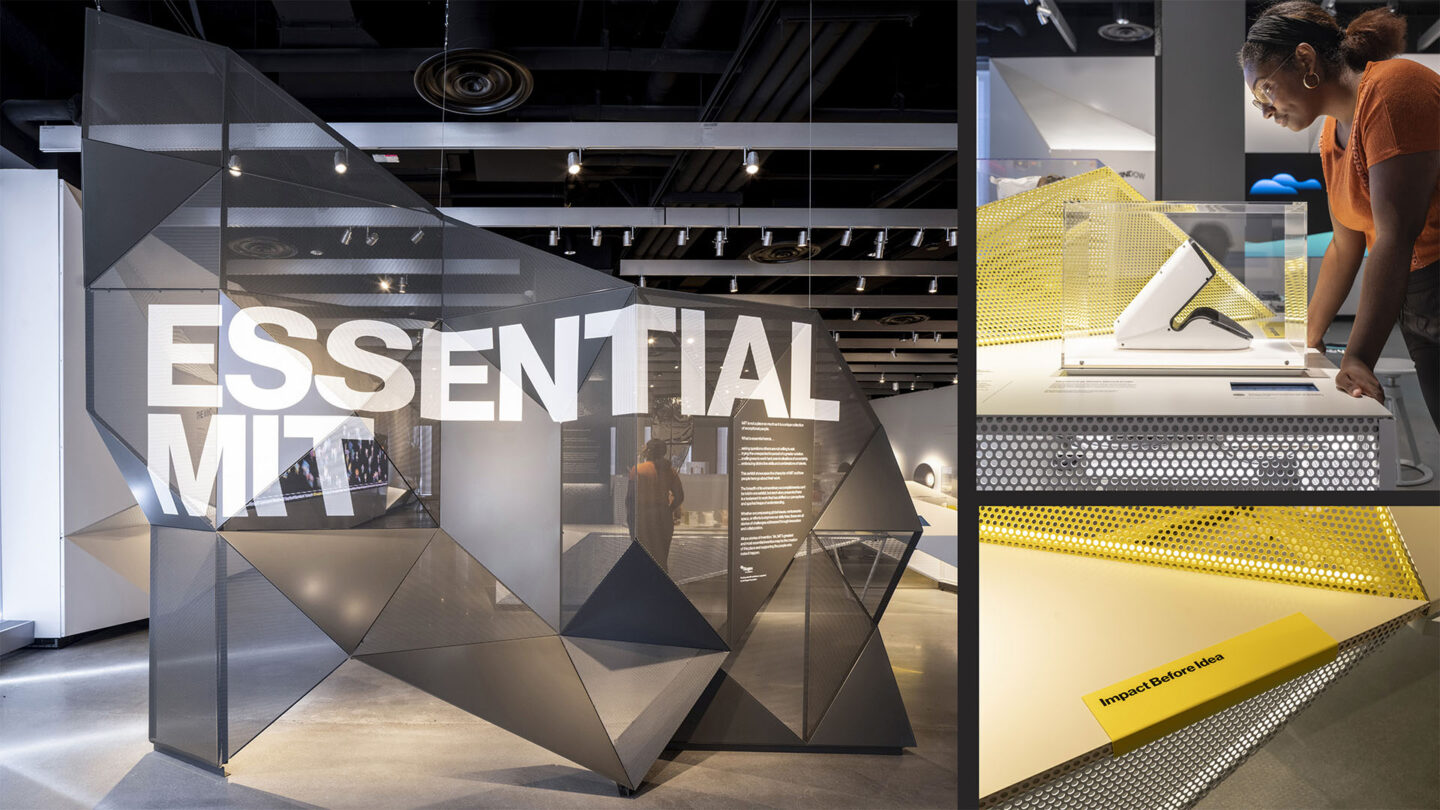
AI Gallery
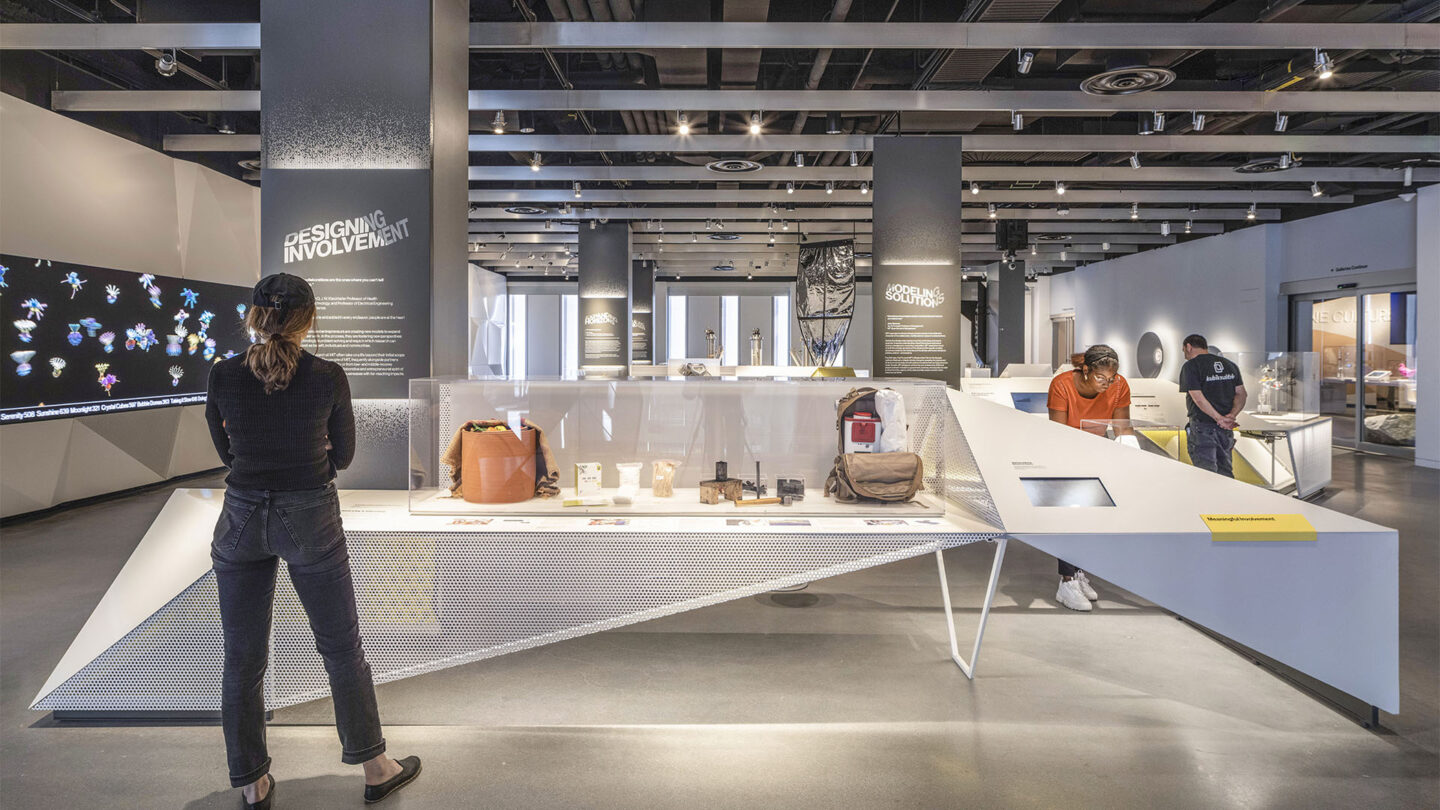
AI Gallery
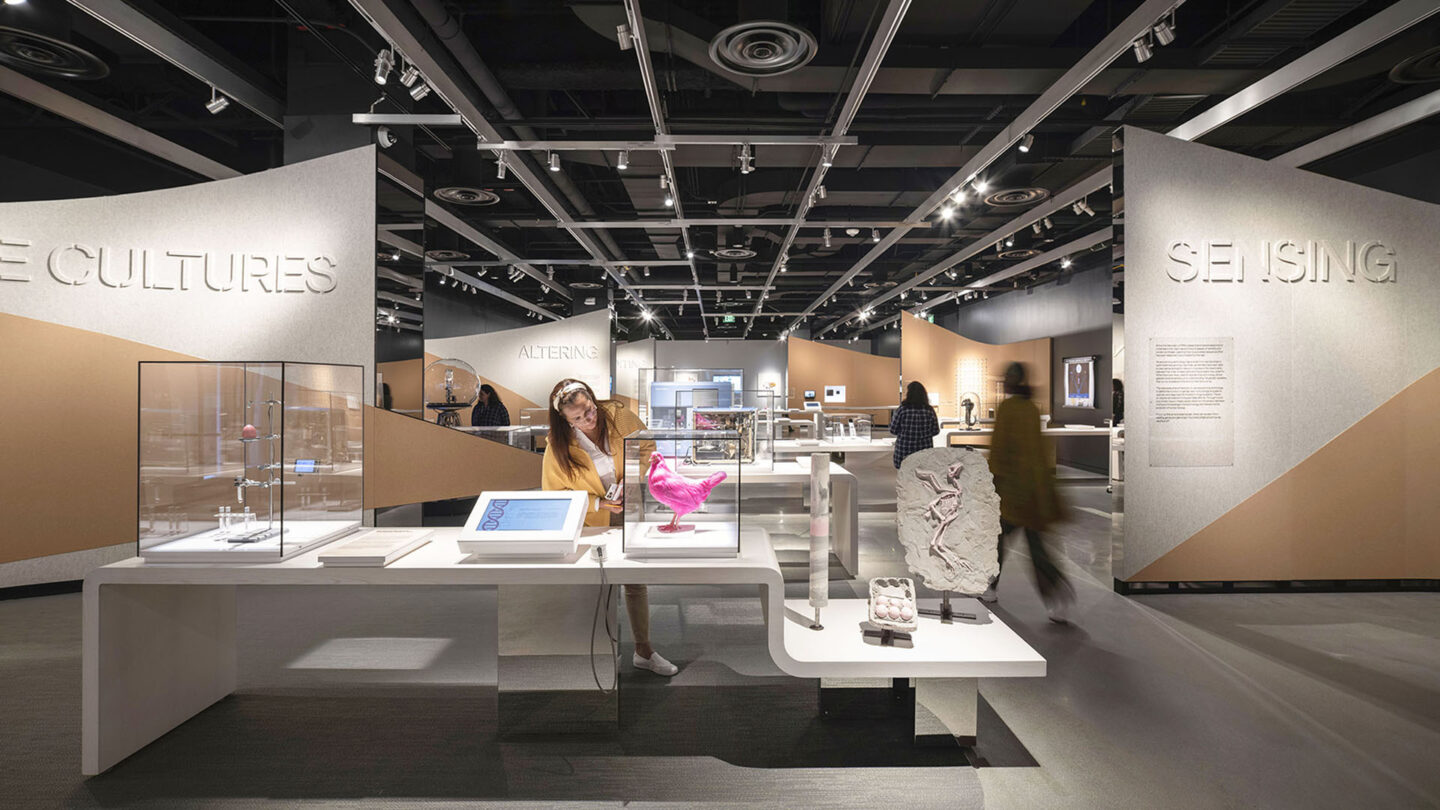
Life Sciences Gallery
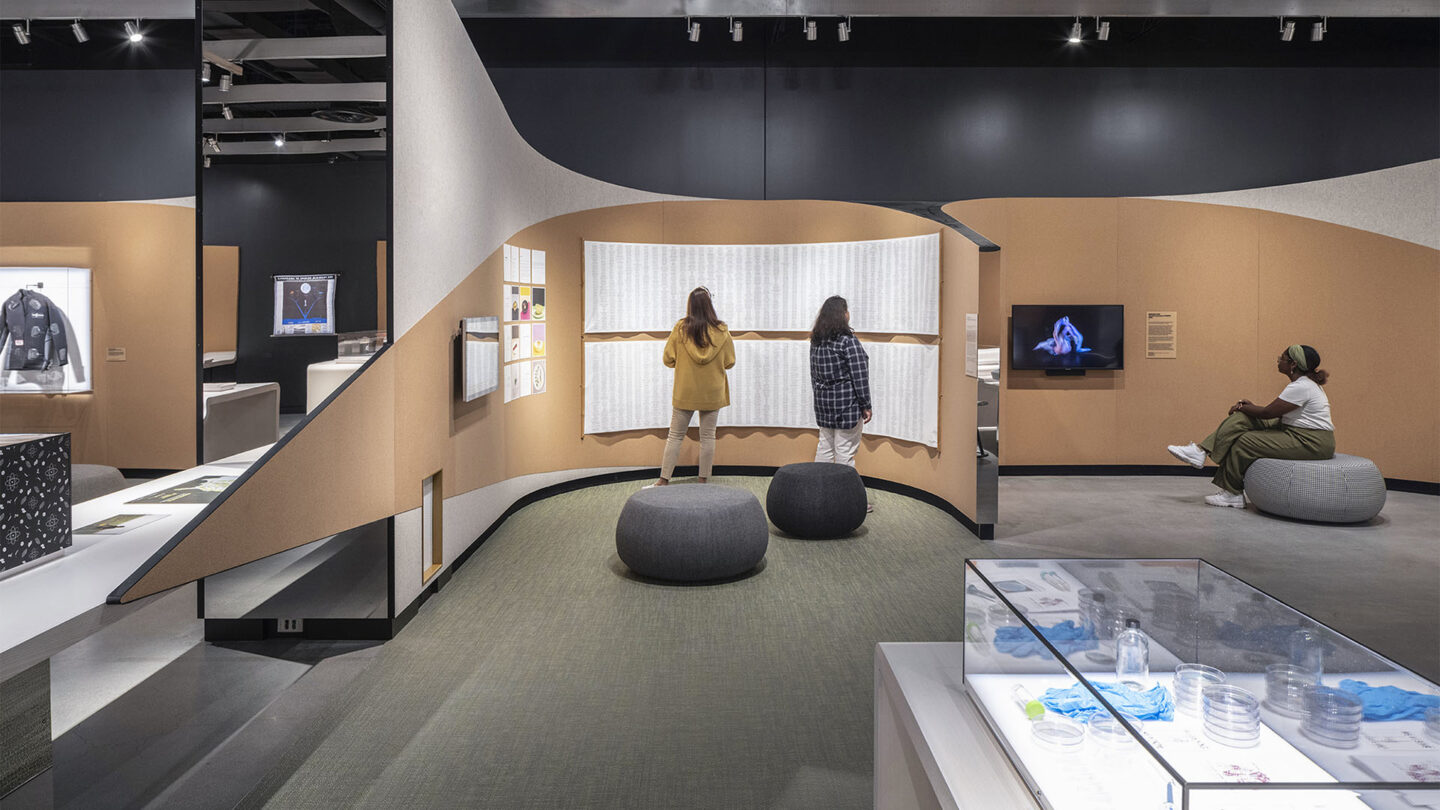
Life Sciences Gallery
Project Details
Design Team
Wendy Evans Joseph (principal in charge)
Monica Coghlan (partner for design)
Jose Luis Vidalon (partner for management and technology)
Alice Tallman (art management)
Wonwoo Park (designer)
Shriya Sanil (designer)
Alex Adamski (designer)
Shut Yang (designer)
Daniel Toretsky (designer)
Nils Axen (designer)
Collaborators
Howler and Yoon (architecture)
Blet (media and technology):
Victoria Jones (project management)
Ksenia Dynkin (lead narrative strategist)
Katie Savage (lead creative director)
Ben Bojko (technical director)
Kim Gim (lead creative director)
Braxton Collier (technical director)
Katie Lannigan (project management for AI: Mind the Gap and MIT Collects galleries)
Ben Baker (project management)
Jillian Hammer (concept design)
Hillary Cleary (supporting project management)
Pentagram (graphic design):
Michael Beirut (project lead)
Jonny Sikov (project designer)
Tillotson Design Associates (lighting design):
Erin Dreyfous (partner)
Noor Traboulsi (senior associate)
Kubik Maltbie (media integration):
Don Sweetman (integrator)
Photo Credits
Alex Fradkin (photography)
Open Date
October 2022

